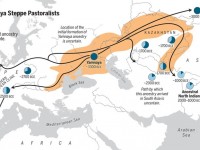I have mentioned before on https://www.rhesusnegative.net that there is a good chance that the deletion of the D gene has taken place at different times at different locations, but as was also pointed out to me by another Eupedia member, the Neanderthals were in overlapping locations.
As I have also shared on Rhesusnegative.net, the Neanderthals were Partial-D. A.E. Mourant's paper from the 50s suggested Neanderthaloid-like beings around what is now the Basque region may have been the origin of Rh negative blood around 50,000 years ago.
All of this has been shared on the rhesusnegative.net blog and if you are really interested in more and the actual studies, continue there and use the search function.
On this blog, I prefer to keep things lighter if you will.
I am more interested in answering some questions and then leave the blog link up for those who want the details. Not everyone has time for extensive research, so I am doing my best to highlight what I think matters most and then leave the long-winded evidence on rhesusnegative.net.
From my understanding, the Yamnaya invaded the Basques around 3,000-4,000 years ago. They pretty much replaced the previous y-DNA of I2a and some G2a with R1b.
What were the blood type frequencies among the Basques before and after the Yamnaya invasion?
Matheson claimed Yamnaya to have had frequencies of 40% Rh- which sounds plausible, but he failed to show clear evidence and has not responded to my request for more information. For the record: I know that he received my request, because... he blocked me. (Never assume scientists are above making shit up)
Another paper published a map of blood type frequencies in ancient Europe indicated far higher Rh negatives frequencies among Basques in the past, but also in the Ukraine region which is where the Yamnaya were located at the time.
Here is more:
https://www.rhesusnegative.net/staynegative/blood-groups-in-ancient-europe-2/
In the past, I have also shot a video while compiling data for Rhesusnegative.net:
https://www.youtube.com/watch?v=GNgWTi4tO9g&t=23s
As always, the RHesearch continues and there is much we do not know and a lot of information that requires dedication to get access to.
If you wish to have more information or have something to add, you can do so below or do so on the rhesusnegative.net link above.
Mike Dammann

